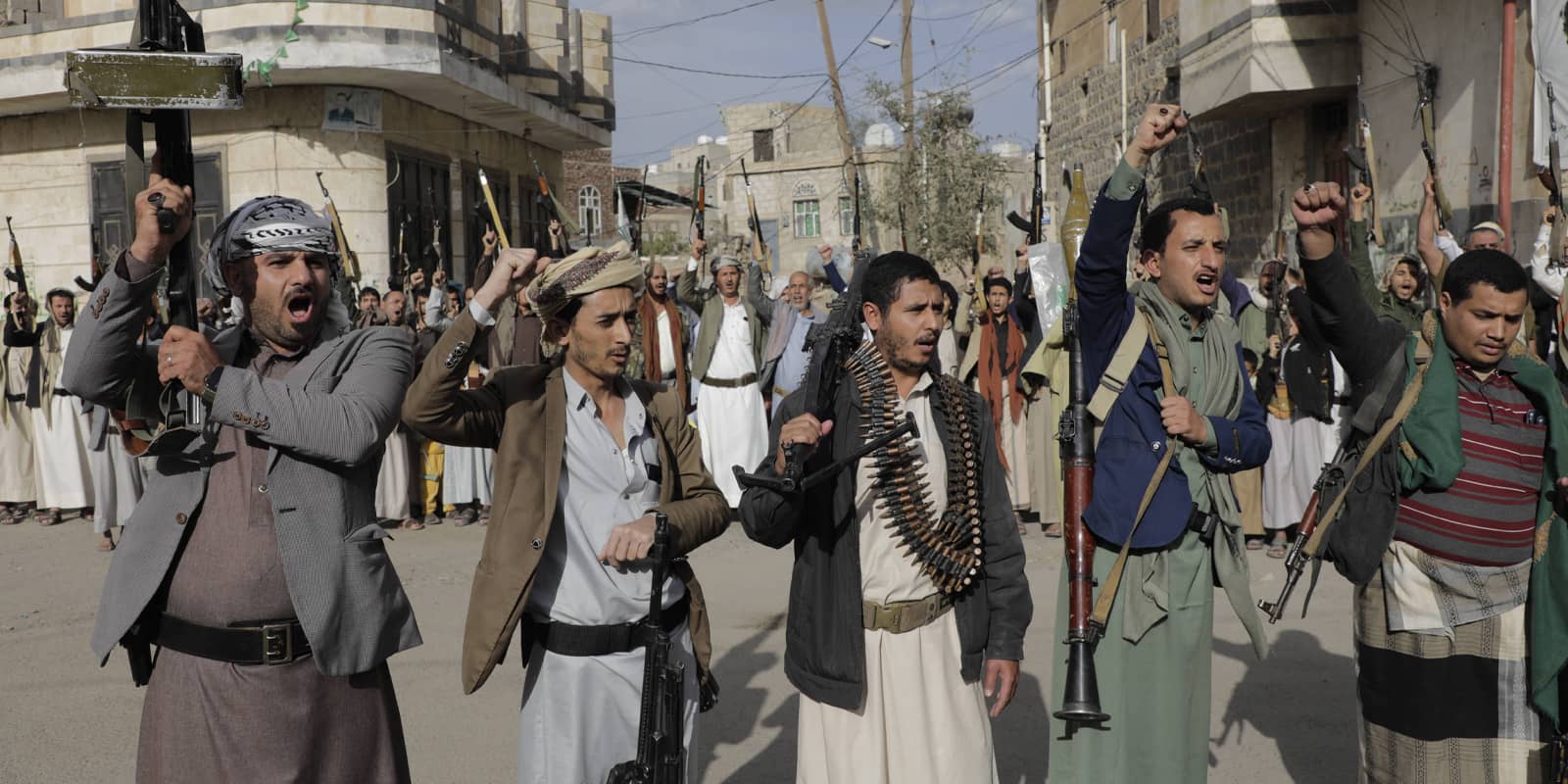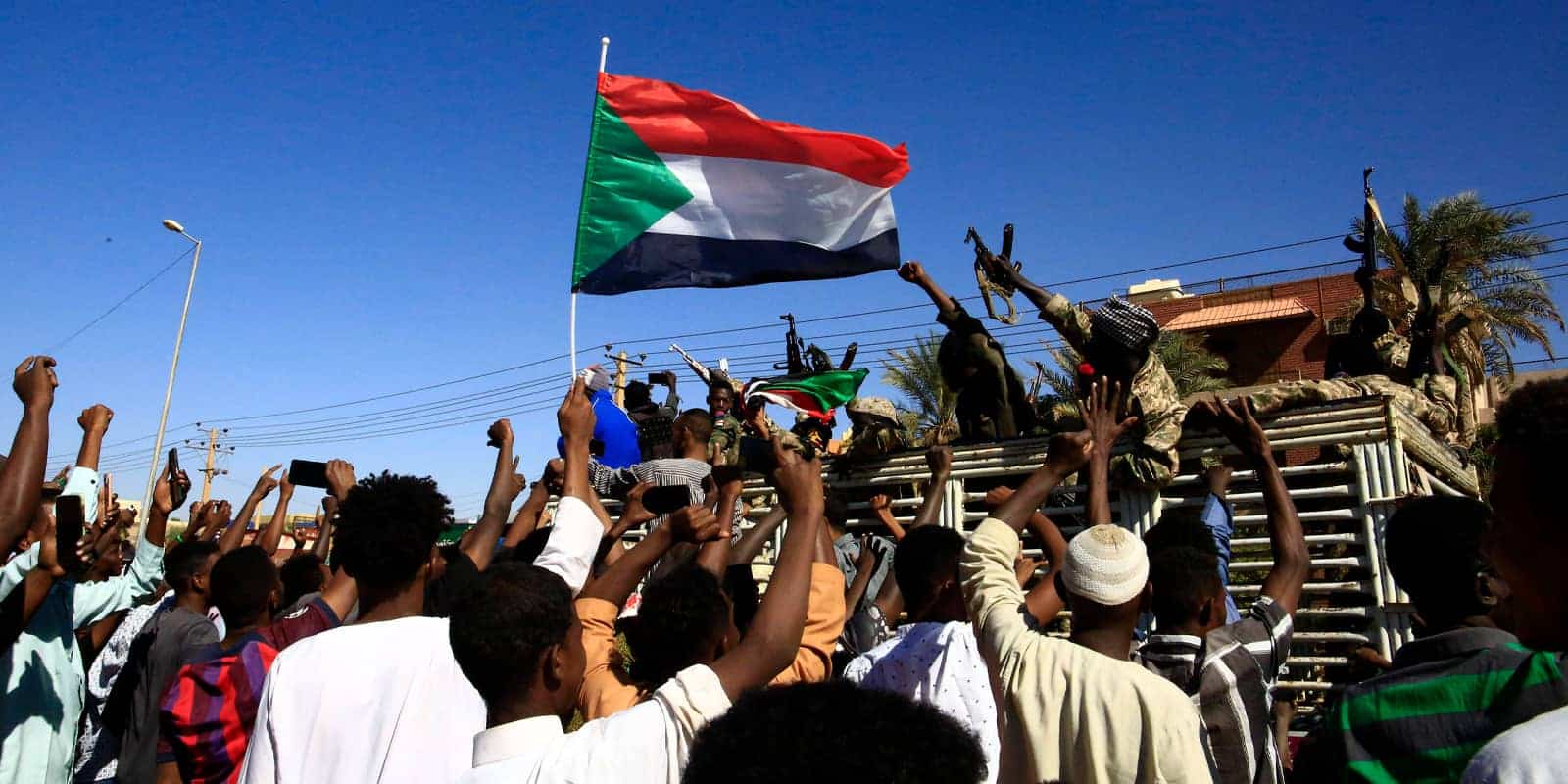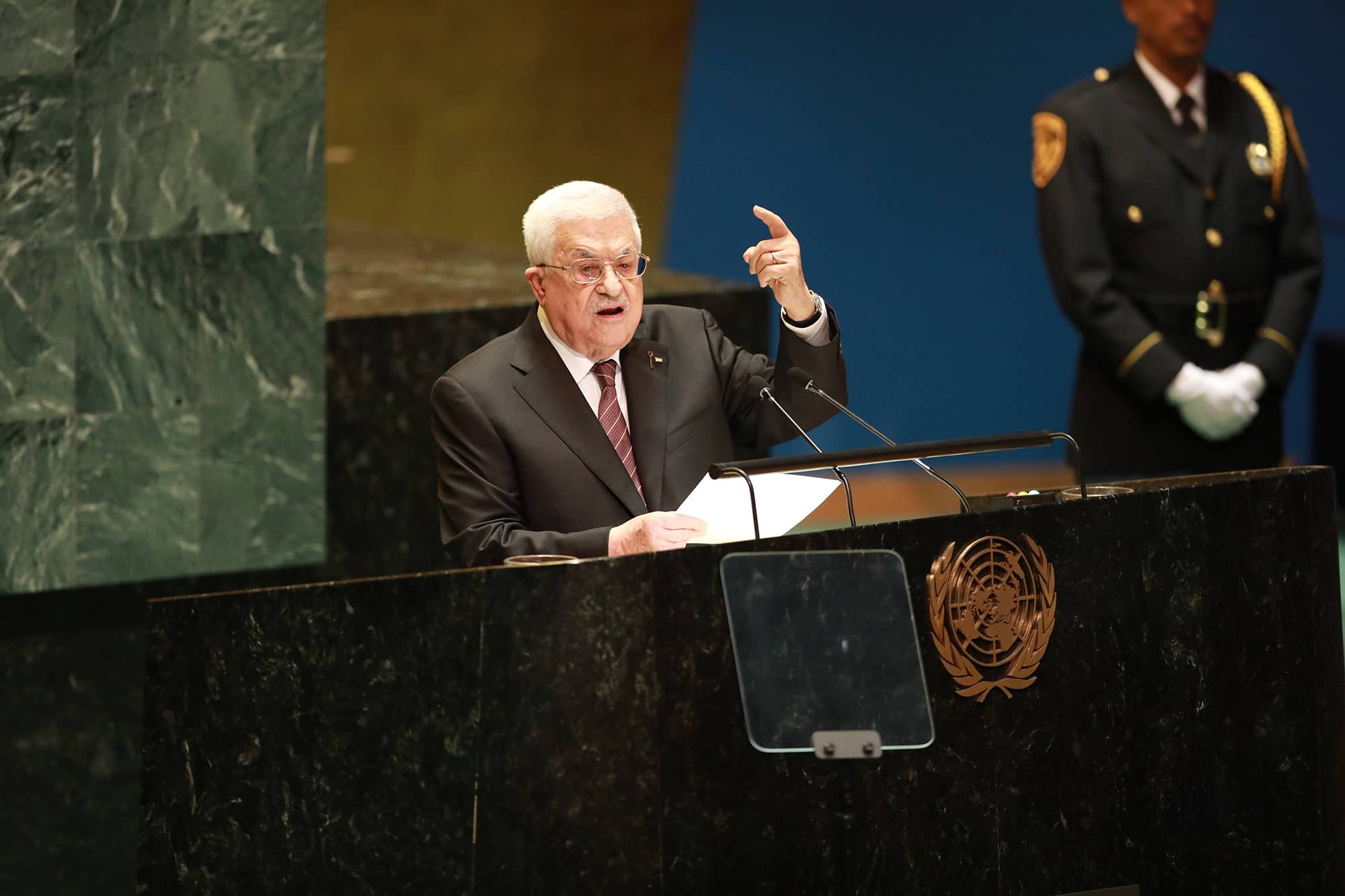Introduction
Since its establishment in 1948, the IDF has been the pillar of Israel’s national security. As a people’s army, it has reflected the ethos of Israeli society: existential determination, national solidarity, courageous leadership, and a deep sense of mission. In recent decades, however—and even more so during the “War of Redemption” (Swords of Iron)—we have seen serious flaws within the army. These include an erosion of operational readiness and command independence, growing detachment of senior commanders from the combat forces in the field, and excessive reliance on external actors and legal advisors. These are not local tactical lapses but the cumulative result of long-term processes.
The war, which began with a systemic collapse, at times revealed the IDF at its finest, but it also exposed the fundamental problems from which the army suffers. This article seeks to examine those problems and to understand what happened to the IDF—and beyond that, to consider what can be done to repair the system, especially in light of the lessons of the recent war, so that the process of correction can begin without waiting for the findings of a commission of inquiry.
We argue that the principal turning point that set these problems in motion was the Oslo Accords period of the 1990s, when the IDF shifted from an independent operational force to become a political “player,” weakening its combat identity. This shift was later intensified by generational changes, heightened political involvement, increased dependence on the United States, an excessive focus on technology, a lack of civil courage, a problematic debriefing culture, the penetration of progressive currents, the outsourcing of education, the weakening of professional training, and excessive preoccupation with routine security at the expense of war preparedness—all of which eroded command independence.
These failures were starkly evident on October 7 when we saw a conceptual and intelligence collapse, shock, hesitation among commanders, and a slow response. The IDF shifted from a command ethos based on an existential sense of mission toward a professional army centered on career paths; senior commanders became detached from the field, dependent on legal advisors and technology, and preoccupied with matters outside the military core.
This article is divided into two main parts: the first analyzes the historical and cultural processes that led to this deterioration; the second offers practical recommendations for change. Looking ahead, the IDF must refocus on its core responsibilities—combat training, command independence, and national values—in order to confront the range of threats that will continue to challenge it and will require ongoing learning and creative thinking.
The Oslo Accords – A Historical Turning Point
The Oslo Accords, signed between Israel and the PLO, marked a critical turning point in Israel’s military–political history. The IDF chief of staff at the time, Ehud Barak, remarked that the agreement was “more perforated from a security standpoint than Swiss cheese,” which led to the appointment of the Deputy Chief of Staff, the late Amnon Lipkin-Shahak, to head the security team in the negotiations. Lipkin-Shahak, who was slated to replace Barak, instructed IDF officers to arrive at meetings in suits rather than uniforms so as “not to offend” the PLO representatives. This symbolism—the shift from combat uniforms to suits—signaled the beginning of a process in which the IDF moved from an operational force to a diplomatic arm.
The IDF had always maintained an interface with the political echelon, but historically that interface concerned the application of force. Bringing the army into the Oslo negotiations represented a deeper cultural shift, in which, gradually, some senior officers began to see themselves as specialists in political matters rather than in combat command.
The IDF soon found itself entangled in political issues: the management of border crossings, security arrangements, and coordination with the Palestinian Authority. This shift harmed the morale of combat soldiers. Officers who had been raised on core IDF values—such as initiative and offense—now found themselves deeply immersed in political considerations and political pressures. In addition, Oslo encouraged a doctrine of “conflict management” instead of striving for decisive victory.
At the same time, a team led by Maj. Gen. Yoram Yair and Professor Asa Kasher drafted a new document defining the values of the IDF, known as the “ethical code.” This document highlighted the changes that were underway. Values such as love of the land, comradeship, and purity of arms were excluded. The concern was that including, for example, “love of the land” might create resistance among soldiers and commanders if they were ordered to evacuate settlers from parts of the homeland. The version ultimately adopted by the IDF in 1994 became a marker of this change.
For many years, the “natural” path for senior commanders was to transition into politics shortly after retiring from the army. This created the impression that, for some, military service was merely another rung in their career ladder rather than an existential mission. As a result, some senior officers focused on maintaining political balance and on strategic considerations at the expense of readiness for combat and the drive for victory. The “gray suits” phenomenon contributed to a shift from a generation of commanders striving to defeat the enemy to a generation of “managers” focused on containing and moderating it.
Under the Oslo framework, Israel allowed the Palestinians to acquire various types of weapons, which in some cases were later used against the IDF. The withdrawals and the transfer of responsibility to Palestinian Authority personnel created dilemmas for commanders. Officers were required to implement policies that clashed with the values on which they had been raised.
The shift from an army built around offense and decision to one engaged in containment, agreements, and withdrawals also reduced motivation among soldiers—a decline that intensified as terror attacks in Judea and Samaria and in the Gaza Strip increased following each withdrawal.[1]
The Generational Shift – From Existential Mission to Professional Career
The changes that took place in the IDF during the Oslo years converged with a deeper societal shift: the transition from generations shaped by the Holocaust and the War of Independence to generations that took Israel’s existence for granted. The earlier generations saw military service as an existential mission; younger generations increasingly viewed it as a professional career track.
The generation of Yigal Allon and his contemporaries grew up under the shadow of existential threats. They built a people’s army in which every soldier felt part of a national project. By contrast, the generation of the 1980s and 1990s—born into a stable, economically developed state—experienced military service more as a professional pathway, after which senior officers would move on to a second or even third career. Of course, this is a generalization, and there are many dedicated soldiers and officers for whom service remains a mission. But part of the problem is that many of those officers are blocked on their way up the ranks and do not always reach the senior leadership.
This change was driven by broader social forces: Israel’s economic boom, especially in high-tech, created new opportunities and alternatives to military service. Positions in technological units, headquarters, and offices offered officers more benefits than demanding command and field positions. The generational shift also manifested in special service tracks that emphasized the benefits of career service but reduced the sense of mission.
Over time, this generational transition encouraged some senior officers to see themselves as employees building careers rather than as commanders driven by a sense of existential purpose.
Growing Involvement in Political Issues
The IDF’s increasing involvement in political matters began with Oslo, but it did not end there. The sequence of withdrawals—Oslo, the 2000 pullout from Lebanon, and the 2005 disengagement—eroded the IDF’s role as Israel’s primary instrument for employing force in defense of the state. The disengagement from Gaza represented the peak of this process: the IDF managed the evacuation of communities and residents while conducting “mental preparation” programs for soldiers and commanders to “normalize” the idea of evacuation.
In both Lebanon and Gaza, as expected in a democratic state, the IDF’s professional reservations about the political echelon’s decisions—such as the disengagement in general and, in particular, the withdrawal from the Philadelphi Corridor—were presented to decision makers, but ultimately, the IDF aligned itself with the political decisions that set new borders. It then built a defensive posture along those lines that was completely disconnected from traditional military doctrine.
One example was the decision to place the Gaza Division headquarters and two regional brigade headquarters together in a single, unfortified base in the division’s southern sector. This was a clear case of professional military planning gone adrift as a result of disconnection from military thinking and subordination to a political conception that the disengagement would lead to a stable arrangement—and therefore to a belief that defenses based on military doctrine were unnecessary.
Alongside this retreat from the military’s core mission of applying force, many senior commanders saw themselves increasingly as responsible for issues that were fundamentally civilian. Examples included maintaining the relationship with the U.S. administration, practicing self-restraint in offensive operations to protect the economy and tourism, and other nonmilitary considerations.
This reached its height during the War of Redemption. The IDF intervened in the political management of the war, pressed for deals, called to halt fighting, and sought to prevent its expansion for various reasons. Examples include the IDF’s opposition to entering Rafah due to American objections; its resistance to the “pager operation” and to expanding the fighting in Lebanon, and its position that eliminating Hezbollah Secretary General Hassan Nasrallah should be conditioned on prior notification of the United States. The IDF consistently urged pursuit of a hostage deal—even at the cost of an end to the war—arguing repeatedly that “we will know how to handle the consequences.”
This was also reflected in the IDF’s demand for answers regarding “the day after” in Gaza—a demand that never occurred to the commanders of the Six-Day War or the Yom Kippur War. A similar dynamic appeared in the positions taken by Chief of Staff Eyal Zamir in the Security-Political Cabinet: opposition to distributing humanitarian aid via IDF soldiers; opposition to the construction of a “humanitarian city” in Rafah; and opposition to the offensive to take over Gaza City.
Time after time, the army opposed the political echelon’s preferred course of action. And when it appeared that its views were not being accepted, senior officers seemingly turned to selective press briefings and targeted leaks designed to pressure the Cabinet via public opinion.

The American “Bear Hug”
The relationship between the IDF and the United States, which has grown stronger since the 1970s and especially since the 1978 Camp David Accords, has in recent decades shifted from a desirable strategic partnership to a relationship of excessive dependence that is often described as a “bear hug”: an embrace that limits Israel’s freedom of action.
Since the Oslo Accords, reliance on American assistance has grown—economically, operationally, and conceptually. The annual U.S. military aid package, now totaling roughly $3.8 billion, enabled the IDF to develop advanced capabilities, especially in air defense and airborne platforms. At the same time, it created a dependence that undermined strategic independence and narrowed Israel’s freedom to make necessary policy decisions. American backing for Israel is unparalleled, yet it comes with a dependence that weakens both deterrence and operational flexibility.
This dependence was starkly evident during the War of Redemption. Delays in U.S. approval for various weapons systems underscored Israel’s vulnerability. The American “bear hug” limited the IDF’s operational choices—for example, U.S. opposition to the IDF going into Rafah, ongoing pressure to halt the war almost at any price, and insistence on facilitating humanitarian aid to Gaza even when it was clear that it was going to Hamas. Ultimately, Israel resisted these pressures, but the IDF— due to its dependence on the United States—supported adopting Washington’s positions.
The American embrace projects power and may contribute to deterrence in the region, but it also signals a degree of weakness. The depth of U.S. involvement, and statements by Israeli officials about American obligations to intervene, if necessary, can convey a lack of confidence in Israel’s ability to defend itself independently. American support can significantly narrow Israel’s room for maneuver, both militarily and in civilian affairs.
It is important to remember that American and Israeli interests are not identical, even if there is significant overlap. At times, American interests will prevail, as in the Yom Kippur War during the siege of the Egyptian Third Army.
The “bear hug” also had a profound effect on the IDF’s senior officer corps. This includes invitations to conferences and military courses in the United States and the awarding of medals and honors. One emblematic moment was the image of the outgoing chief of staff, Lt. Gen. Herzi Halevi, traveling to the United States during the war in the final week of his term to receive a medal from the U.S. Chairman of the Joint Chiefs of Staff —who soon afterward was dismissed by President Trump.
The Erosion of Civil Courage
A lack of civil courage among the IDF’s senior command—often described as the mindset of “the main thing is not to get into trouble”—has become a deep, systemic phenomenon. Senior officers increasingly prefer blind compliance and alignment with prevailing opinion in order to avoid personal risk. Conformity and “herd mentality” is chosen over command initiative, willingness to challenge consensus, and independent decision making.
The IDF’s debriefings after October 7 revealed ethical and professional failures in which many commanders did not demand reevaluation of existing assumptions. For example, the assumption that Hamas was deterred, or the assessment that Yahya Sinwar would not attack Israel because he was focused on economic development and civilian welfare in Gaza, went largely unchallenged. Commanders ignored report from the field and failed to issue warnings, and some may have tailored their reporting to fit the prevailing conception. Reports of suspicious activity along the Gaza border were not relayed with the urgency they warranted, contributing directly to the forces’ lack of preparedness. Had more commanders shown civil courage and been willing to voice dissent and insist on deeper scrutiny, the outcome may well have been different.[2]
A clear example of this phenomenon appeared in the development of former Chief of Staff Aviv Kochavi’s “victory concept.” Despite the fact that it represented a sharp departure from the force-employment doctrine of his predecessor, Gadi Eisenkot, virtually no one in the senior command challenged it.[3] Instead, they quickly fell in line, even though the new concept contained many inherent problems.[4] Rather than raising their concerns in ways that could have forced a meaningful systemic discussion, commanders settled for gossip and complaints.
This erosion of civil courage has been accelerated by the expanding role of legal oversight and the army’s growing dependence on legal advisors, which have seen the IDF become an increasingly bureaucratic organization that prefers procedural order over operational daring. The influence of legal advisors grew as the Military Advocate General’s Corps expanded, embedding lawyers in strike cells, operations rooms, and divisional headquarters as part of the approval chain for operational actions.
The problem is not the presence of legal advisors, but the way their role has been defined. Their proper function should be to determine how the IDF can advance its objectives within the law—in other words to enable the IDF to accomplish its mission and protect its soldiers and commanders, not to restrict its operational freedom.
A Dysfunctional Debriefing Culture
The IDF’s debriefing culture, originally designed as a central tool for learning, operational improvement, and drawing lessons, has, in recent decades, become a mechanism of self-protection, in which the search for culprits outweighs deep systemic analysis. The debriefings themselves have become a long and cumbersome process that delays command decisions.
This trend intensified after the 2006 Second Lebanon War and reached its peak during the War of Redemption, when the debriefings of the events of October 7 dragged on for months, with legal advisors involved in preparing officers and with greater emphasis placed on shaping narratives than on learning.
Historically, the IDF’s debriefing culture arose from the need to learn from failure. But in recent decades—under increasing public, legal, and media pressure—the debriefing has become a political tool. Commanders fear that debriefings may harm their careers. This was evident in the October 7 debriefings, which focused mainly on analyzing tactical actions and highlighting combat heroism, and far less on examining failures at the level of the General Staff.
The Decline of Professional Training and Military Doctrine
The decline of professional training and military doctrine within the IDF is a long-running process that has unfolded over the past few decades. From the army’s founding through the Six-Day War, a strong emphasis was placed on training and military doctrine, but since then there has been a growing crisis. Military doctrine lost much of its former stature; a trend linked in part to the broader shift from a mission-driven ethos to a career-driven one. Doctrine divisions have shrunk, and those serving in them are no longer drawn from the army’s operational core. Short command tenures, a lack of professionalism and oversight on the one hand, and structural changes, budgetary pressures, and an excessive focus on technology at the expense of professional training on the other, have all contributed to an erosion in the practice of the military profession.
The IDF, which in its early years benefited from a strong intellectual foundation, gradually lost the institutional backbone that had been central to its quality. As doctrinal knowledge declined, the army increasingly turned outward to the defense industries to find solutions rooted in technological systems, while neglecting the development of its own intellectual “muscle.”[5]
Doctrinal bodies lost prestige and relevance. Professional content shifted frequently due to rapid changes in command, and force buildup no longer rested on all its pillars: training and exercises, combat doctrine, weapon systems, manpower and planning. In recent years, the dominant factor has become the weapon systems developed in Israel’s defense industries. In many cases, the army has become reactive to defense-industry innovations, driven by a symbiotic relationship between IDF commanders and purchase personnel and the defense industries’ marketing personnel, many of whom are former IDF officers themselves.
Another trend has been the growing preference for civilian academic degrees. The IDF encourages officers to pursue degrees at prestigious universities or to attend courses abroad, offering scholarships and enhanced prospects for post-service employment. But this comes at the expense of studying the military profession and military doctrine, producing officers with broad academic knowledge but limited grounding in military and security studies. On the one hand, the army invests extended periods of an officer’s service in studies and training; on the other hand, those same periods are devoted to a wide range of subjects that are not necessarily military or security studies. Even the material taught on military and security matters is not conveyed coherently across the different stages of training. There is extensive duplication in the content, and at times even contradiction between one training program and another.[6]
Before the War of Redemption, officer training programs lacked components that could have prepared the army for a prolonged multi-front war. Although the army spoke for years about such a war, in practice relatively little was done to prepare for it, especially in terms of training commanders. Professional courses were shortened or displaced by academic studies, and technology led the way. Doctrine must, of course, be examined and updated in light of new developments, but such change can only emerge from mastery of the foundational professional and doctrinal base.
An Increasing Focus on Technology
The technological revolution in the IDF, which began in the 1990s with growing reliance on advanced intelligence systems, became a strategic asset—but also a double-edged sword. The army’s dependence on technology and intelligence shunted the ground forces and the development of classical ground forces doctrine to the margins. In their desire to emulate major technology companies, IDF commanders increasingly sought solutions in the civilian hi-tech realm, neglecting fundamental military literature and abandoning the core principles of the military profession.
As a result, the number of technological personnel in the General Staff and in the various army corps expanded, while the IDF’s doctrine and training division contracted to the point that it is now barely relevant to the development of operational concepts and combat doctrine.
The focus on technology also played a role in the emergence of a social divide within the army—between the “blue-collar” IDF and the “white-collar” IDF. Combat units are populated largely by soldiers from Israel’s social and geographic periphery and from the national-religious community, while technological and intelligence units are largely filled by recruits from the upper socioeconomic deciles and from central Israel. Service in the latter units is not only more comfortable and less dangerous, it also provides a major advantage in entering the civilian hi-tech sector after completing army service.[7]
In some circles, the ethos of combat army and the fighting soldier has eroded, and at the same time, there has been a rise in what has been dubbed “meaningful service” in technological units. Commanders have expanded the definition of “combatant” to include technological and support roles. New terms have emerged, such as “technological combatant” and “cyber combatant,” and even air-defense personnel are labeled combatants. To compensate for this expansion in the use of the term “combatant,” those serving in front-line units—who genuinely risk their lives on the battlefield—are now called “spearhead fighters.”
This erosion of the combat ethos has also been driven by the adoption of civilian norms and progressive ideas within the army. Recently, it was reported that civilian management literature is distributed in IDF command courses and has become popular among commanders. The managerial figure has become preferable to that of the fighting commander. Management theories from the civilian market are now relied upon, while foundational military doctrines are neglected. This internal dissonance affects the army and, by extension, Israeli society, especially conscripted youth. A similar pattern appeared in the U.S. military during the Vietnam era.[8]
In the years that preceded the War of Redemption, enlistment rates—especially enlistment to combat units—declined, as more recruits sought to join technological units. The army responded by assigning some soldiers with combat medical profiles to technological units, further weakening the combat ranks.[9]
For many years, the IDF has prioritized recruitment to special forces units, the pilot and naval officer training programs, technological units, and Military Intelligence. These units enjoy access to Israel’s highest-quality manpower. Their graduates, especially those from technological and cyber units, secure a major head start in their post-service careers. By contrast, soldiers and officers emerging from combat units begin their civilian lives at a significant disadvantage to graduates of the “white collar” IDF, without the army providing a meaningful compensation mechanism, despite several attempts to correct this imbalance.
As a result, the ranks of the ground forces are filled primarily with those who did not gain entry to the technological, intelligence, or special forces tracks. This directly affects the quality of IDF command as the nature of war and the centrality of ground combat requires that the army’s senior leadership be composed of officers from the fighting echelons. A shortage of high-quality personnel in these units inevitably leads to the appointment of less professional commanders.[10]

Penetration of Progressive Currents into the IDF
Progressive currents rooted in global and local social movements have entered the IDF in recent decades through educational programs, training frameworks, and the desire of some commanders to appear “modern.” These currents have influenced the army’s priorities. Issues of gender, LGBTQ (lesbian, gay, bisexual, and transgender), and climate are not inherently problematic, but the concern lies in how they have been elevated to the level of an “agenda” that diverts command attention and resources away from the military core. Their introduction into operational spheres and training frameworks risks undermining the army’s readiness for its mission.
LGBTQ movements in Israel have developed since the late 1980s, and their influence eventually reached the army, with an emphasis on equality and inclusion. This was reflected in changes such as renaming the Chief of Staff’s Advisor on Women’s Affairs to the Advisor on Gender Issues. The problem is that the IDF allowed civilian organizations active in the areas of gender and LGBTQ issues to enter army frameworks without proper oversight, and these groups promoted progressive agendas that diluted the army’s focus on its military tasks. For example, integrating transgender soldiers into combat units created operational difficulties and problematic situations within units, all in the name of equality.
Regarding women’s service, instead of focusing on maximizing the national potential of all servicemembers, the IDF was drawn into promoting gender equality in ways that ultimately harmed that potential and impaired operational readiness. Integrating women into combat roles while lowering physical standards reduced the ability of those units to function at full operational effectiveness.[11]
Climate issues entered the IDF through environmental programs, but the process reached a peak when units such as 8200 began dedicating attention to climate-change activities, which of course came at the expense of other core missions.
“Outsourcing” Military Education – The Wexner Foundation and External Agendas
The training of senior IDF officers involves not only professional development but also values-based education. In the past, this realm was internal and rooted in military doctrine and national values. In recent decades, however, it has become heavily dependent on external bodies such as the Wexner Foundation, the Mandel Foundation, and similar organizations.
This process, effectively an “outsourcing” of education and training, has raised deep concerns about the influence of non-military agendas, including progressive, globalist, and at times post-Zionist ideas, on senior command thinking.
Founded in 1985 by American Jewish businessman Leslie Wexner, the Wexner Foundation originally aimed to cultivate Jewish and Israeli leadership through prestigious academic programs, primarily at Harvard University. But growing criticism argues that the foundation introduced value frameworks that have been detrimental to the IDF. The prestige of the program and its generous financial benefits encouraged commanders from the army’s operational core to pursue Wexner tracks at the expense of military training programs such as the National Security College that were viewed as less prestigious or rewarding.
Former Chief of Staff Aviv Kochavi, responsible for force buildup and defense planning in the years leading up to the October 7 massacre, is a graduate of the program’s eighth cohort. Several major generals are also alumni: Amir Baram, Tamir Yadai, Yaron Finkelman, Yoel Strick, Ori Gordin, Yehuda Fuchs, Saar Tzur, Itai Virov, Nimrod Aloni, Yossi Beidatz, Noam Tibon, Kobi Barak, Avi Gil, as well as Brigadier Generals Avi Rosenfeld, Asaf Cohen, and many others. The list extends further, including Ronen Bar, former head of the Shin bet (ISA), and Eyal Hulata, former National Security Adviser. As can be seen, the senior command echelon across Israel’s security services has been staffed heavily by Wexner alumni.[12] Until the outbreak of the war, they shaped the doctrinal discourse of the IDF’s top leadership for no fewer than twelve consecutive years.
A similar pattern characterizes other programs the IDF adopted for command training, such as the Mandel programs. The core issue is not the foundations themselves, which each advance their own mission, but the IDF’s decision to outsource the professional and values-based education of its senior officers to external actors without adequate oversight or control.
Lessons of the War of Redemption
The War of Redemption acted as a mirror reflecting all the IDF’s professional deficiencies: a complete intelligence failure; hesitant command; detachment from the field; excessive dependence on technology; and a weakened capacity for independent military judgment. Once a force designed to defeat, uproot and destroy the enemy, the IDF turned into a force focused on cognitive deterrence, engaged in containment and gravitating to diplomatic solutions.
On the eve of October 7—much like on the eve of the Yom Kippur War—Israel’s defense posture was built on the assumption that the enemy was deterred and that intelligence would provide early warning of any impending attack. This raises a fundamental question: how did Israel’s defense concept come over recent decades to diverge so sharply from the country’s security doctrine, the IDF’s own strategy, and the lessons of the Yom Kippur War—and how did such a shift occur without explicit authorization or involvement of the political echelon (weakness of civilian oversight of the IDF and the responsibility of the political echelon across successive governments)?[13]
The failures exposed on October 7 touched every one of the four pillars of Israel’s security concept: early warning — intelligence assessments were disconnected from the information collected, as even the best collection capabilities and the highest-quality intelligence cannot compensate for assessments shaped by rigid, unchallenged assumptions and groupthink; defense — failure of command and control during the invasion, and a defense concept that relied excessively on technology, weakened territorial defense, neglected border communities, and failed to prepare the forces for decisive combat; deterrence — deterrence collapsed and failed to prevent the Hamas assault and failed to prevent additional proxy forces from joining the war; decisive victory —the concept of decisive victory was replaced by a doctrine of deterrence.
The multi-front war Israel has been fighting since October 7 has highlighted the depth of the IDF’s unpreparedness and the extent to which its force buildup was misconceived.
The war also demonstrated that the IDF is an extremely powerful body that lacks effective civilian oversight. As a result, the IDF was able to eliminate reserve units, degrade readiness, and determine that reservists were no longer needed.[14]The IDF also suffers from an excess of officers alongside a shortage of NCOs who form the professional backbone of the combat formations.[15] Similarly, the process for appointing major generals produced a troubling uniformity within the General Staff, along with an absence of diversity of thinking, which in turn leads to groupthink, intellectual rigidity, and unchallenged conceptual frameworks.
For decades, the IDF’s first instinct in addressing operational problems has been to seek technological solutions. The events of October 7 exposed the over-dependence on technology—in intelligence collection, in the construction of the border barrier, and in both defensive and offensive responses. Meanwhile, the fundamental elements of the military profession were neglected and worn thin. The ground forces were underdeveloped, as were the ground forces reserve brigades.
While both IDF regular and reserve forces achieved impressive ground-combat successes during the war, these achievements stemmed primarily from fighting spirit and a sense of mission, less so from the readiness of the ground forces for war.
Recommendations for Change
First, the army must return to its natural role, grounded in the understanding that the most fundamental requirement is regulating the relationship between the political echelon and the military–security echelon, restoring balance between them with the IDF subordinate to the elected leadership. In practice, this means a normalization of civil–military relations. This task is no less important than formulating a security concept or an operational strategy, and it is a necessary precondition for implementing both.
A close connection must be forged between force-buildup processes and the design of strategy for applying force. These cannot remain the exclusive domain of the army, the political echelon bears responsibility as well. That responsibility can only be exercised effectively if the civilian leadership is deeply and substantively involved, with sufficient knowledge and understanding of both force buildup and force deployment. Because force-buildup priorities and operational concepts are inevitably shaped by the expertise and worldview of senior commanders, tight civilian oversight must extend to the entire training and education system of the IDF.
Civil–military dialogue must be reorganized so that the IDF focuses solely on force deployment and force buildup. In this regard, Chief of Staff Zamir acted correctly when, upon entering office, he abolished the Strategic Division. The Military Intelligence Research Division should be focused exclusively on military intelligence. In parallel, the political echelon should consider establishing an intelligence research unit outside the IDF—possibly within the National Security Council—with full access to all collection agencies and the authority to issue priority intelligence requirements.
The General Staff and senior command should be streamlined by reducing the number of major-general and thus brigadier-general positions. For example, the number of major-general positions in the Ground Forces Command can be reduced, and the major-general rank of the Military Advocate General eliminated, returning that position to its former level. As a rule, the higher the rank, the lower the organizational effectiveness tends to be, because raising the rank associated with any position triggers a chain reaction of superfluous manpower below it. For example, elevating the head of the International Law Department from colonel to brigadier general led to the elevation of subordinate positions from lieutenant colonel to colonel—without any change to the job content or performance requirements, only higher ranks and higher costs.
The IDF should also consider civilianizing certain professional corps such as the Military Advocate General’s Office, the Financial Advisor to the Chief of Staff, and others. This would allow professionals in these fields to develop long-term expertise and continuity in their roles.
The doctrinal, training, and education components of the IDF must be significantly strengthened. The army should revitalize its intellectual muscle by reinforcing doctrinal bodies and instituting tight oversight to ensure that doctrine is transmitted coherently through schools and training programs. The IDF should reestablish a unified Training Command or Training Directorate that brings all training frameworks—from the earliest stages through the general-staff level—under one integrative authority.
We propose ending entirely the reliance on external bodies for instilling core values in IDF commanders and soldiers. This should be conducted by commanders, as an integral part of their mission. The IDF should also review and update its list of values, restoring elements such as love of the land and comradeship among fighters, and adding the values of courage—both military and civil—and independent command judgment.
The army should also strengthen Jewish and Zionist identity within training frameworks, reinforcing the value of national service as a mission rather than merely a job. Commanders must once again function as educators, responsible for imparting values rather than merely technical skills. To enable this, commanders must be trained to perform these roles, and the IDF must avoid outsourcing educational content to civilian organizations whose agendas may not align with IDF values.
To cure the “don’t get into trouble” mentality and cultivate civil courage among commanders, the military must create an environment in which honest mistakes—those stemming from human error rather than negligence—are tolerated, and open, critical discussion is encouraged and protected.
Conclusion
Israel’s first generations, who grew up in the shadow of the Holocaust and the War of Independence, viewed the IDF as an instrument for realizing Zionism: the existential defense of the Jewish people in its homeland. That military culture emphasized bold command initiative, intensive training, and overcoming obstacles. In recent decades, however, and all the more so during the War of Redemption, the IDF’s deep problems have been laid bare: a decline in operational readiness; weakened command autonomy; detachment from the field; and growing dependence on legal authorities and external actors.
The diminished emphasis on military doctrine and the weakening of professional training led to a preference for civilian academic degrees, sidelining military expertise and producing a training system misaligned with benchmark threats. A focus on technology created a social stratification within the army—“white-collar” (hi-tech, intelligence) versus “blue-collar” (ground forces)—accompanied by erosion of the combat ethos and the expansion of the term “combatant” to include technological roles.
Similarly, the penetration of progressive currents—gender, LGBTQ, climate—consumed attention and resources at the expense of the army’s core mission, lowering physical standards and enabling the entry of external organizations without oversight. The “outsourcing” of officer education introduced progressive agendas into senior command frameworks without sufficient control.
The lessons of the War of Redemption demand a fundamental restructuring. The IDF stands at a crossroads: return to an ethos of existential mission or continue deteriorating. The changes that unfolded from Oslo until today make clear the need for a comprehensive reform of the IDF. Only such a reform can prepare the army to defend the State of Israel effectively in the years ahead and safeguard the Jewish home for generations to come.
[1] Reuven Gal, “Changes in the Components of Motivation for Enlistment in the IDF in Military Service in Israel: Challenges, Alternatives, and Implications,” (Meir Elran and Gabi Sheffer, eds.), INSS, Memorandum 148, September 2015 (Hebrew).
[2] Gabi Siboni and Erez Wiener, “Military Commanders Require Civil Courage,” JISS, August 27, 2025 (Hebrew).
[3] Kochavi’s victory concept included several elements, among them the idea that victory would be achieved through “stand-off destruction” of enemy capabilities, at a rapid pace, using a variety of precise fire capabilities and extensive use of offensive autonomous systems (systems operated remotely with certain independent operational abilities). This rested on the assumption that the severe blows inflicted on the enemy would erode its ability to operate and cause cumulative cognitive damage, eventually exceeding its capacity to absorb blows. Eisenkot’s earlier concept, by contrast, emphasized the need to strengthen maneuvering and direct engagement with the enemy, with stand-off fire serving as a supporting process.
[4] Gabi Siboni and Yuval Bazak, “IDF ‘Victory Doctrine’: The Need for an Updated Doctrine,” JISS, June 14, 2021
[5] Gabi Siboni, Yuval Bazak, and Gal Perl, “Alexander the Great Would Not Have Been Perplexed,” Strategic Assessment, vol. 20, no. 3, October 2017 (Hebrew).
[6] “Training Commanders in the Fighting Ground Forces,” Report of the Subcommittee on Security Doctrine and Force Buildup, Knesset, 2025 (Hebrew).
[7] Gabi Siboni, “Declining Public Trust in the IDF,” JISS, January 23, 2022 (Hebrew).
[8] Richard A. Gabriel and Paul L. Savage, Crisis in Command, Modan, 1981 (Hebrew translation).
[9] Gabi Siboni and Gal Perl, “Combat Military Service: The Crisis in Motivation,” INSS, December 12, 2017.
[10] Gabi Siboni, 21.1.2022
[11] Idit Shafran Gitelman, “Integrating Women into the IDF in Light of the Joint Service Order,” Israel Democracy Institute, June 2020 (Hebrew).
[12] Akiva Bigman, “The Wexner Foundation’s Conceptual Network,” Mida, March 17, 2024 (Hebrew).
[13] Kobi Michael and Gabi Siboni, Israel 20, Misgav Institute, February 26, 2025 (Hebrew).
[14] Ibid
[15] Yuval Bazak, “The IDF — The Path to a More Professional Army: How to Adapt the IDF to Future Challenges,” Military and Strategy, vol. 1, no. 3, INSS, December 2009 (Hebrew).
JISS Policy Papers are published through the generosity of the Greg Rosshandler Family.
















